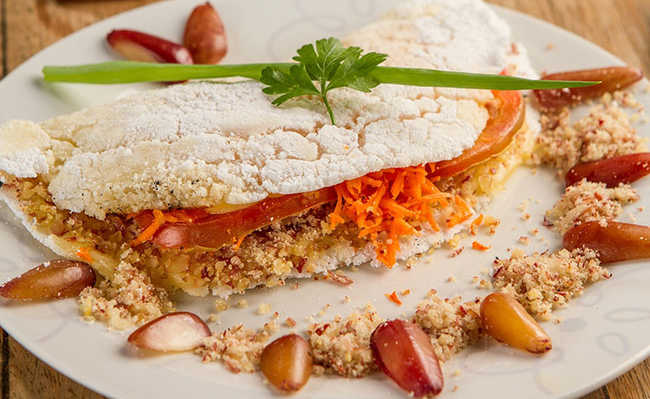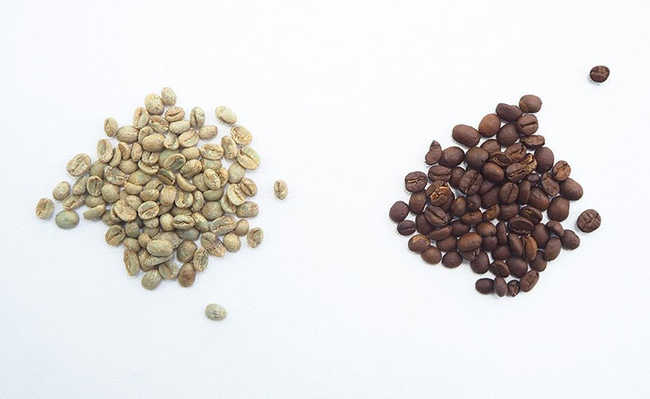Tapioca: benefits and how to make easy recipes
Tapioca is an indigenous recipe based on sweet manioc flour that has many nutritional advantages.

Roberto Sousa Mrsdesign image by Pixabay
Tapioca is made with cassava starch, which is nothing more than sweet powder. Usually found in the form of gum, it is possible to make the tapioca dough directly from the starch, hydrating it, or buy tapioca in the ready-made version, which can go straight to the frying pan. Composed basically of carbohydrates with a high glycemic index, many people wonder if tapioca is fattening. The answer to this question varies, as it is possible to consume the most varied tapioca recipes - and at different times.
Nutritional benefits of tapioca
As it consists of starch, tapioca is an excellent source of energy and does not contain gluten (protein network associated with weight gain). Rich in fiber, carbohydrates and vitamins, it contains almost no fat and is free of chemical additives, making it a great option for a healthier diet.
Tapioca has a significant amount of vegetable proteins, which makes it a great ally of those who practice bodybuilding, vegetarians and even those who want to lose weight - everything will depend on how it will be consumed.
In addition, tapioca is a great source of iron, which, along with copper (which it also contains), increases the amount of red blood cells in the body, preventing conditions such as anemia and other related illnesses.
Other known benefits of tapioca are the reduction in the frequency of migraines, the relief of premenstrual tension and the increase in the levels of serotonin, the hormone responsible for the feeling of well-being.
Because it contains vitamin K and calcium, tapioca is very beneficial for bone protection and development. It is also a good choice for pregnant women, as it has significant amounts of B vitamins and folic acid, which are important for the formation of the baby's neural tube.
Tapioca makes you fat?
Tapioca has a high glycemic index and load. Glycemic index is the speed at which glucose enters the body, while the glycemic load is the amount of glucose in the food. A food that has a high glycemic index and load can lead to health problems such as obesity and type 2 diabetes.
Obesity occurs because, with a higher glycemic index and load, the amount of insulin in the body increases. This excess of insulin in the body leads to the accumulation of fat, which favors type 2 diabetes.
Also, if the body constantly overproduces insulin, it needs more and more of the hormone to do its job. This can overload the pancreas, which is responsible for secreting insulin, which causes type 2 diabetes. Therefore, tapioca is not intended for people with diabetes or pre-diabetes.
- Understand what the glycemic index is
Despite having contraindications, tapioca is a great substitute for French bread, as it offers almost half of the calories contained in it and does not contain gluten, fat and sugar. It also helps muscle growth - as it is a quick source of energy, it is a good choice for pre- and post-workout snacks.
It is noteworthy that when consumed at the end of the day, the energy provided by tapioca can accumulate in your body, especially if you are sedentary. If you want to use tapioca as an ally in your diet, avoid the food in the afternoon and evening. For breakfast it is more than released, as it will provide a great dose of energy for you to start your day well.
how to make tapioca
Easy and nutritious tapioca recipes
In addition to all the benefits mentioned, tapioca is also very versatile and can be included in sweet or savory recipes, either in the traditional way (as a stuffed pancake) or being used in other recipes, including its powdered, dried or grated versions. . Check out some recipes with tapioca:
Crepioca
Ingredients
- 1 non-stick skillet;
- 2 tablespoons of sifted tapioca gum;
- 1 egg.
Method of preparation
Beat the egg and white well and mix them with two tablespoons of tapioca gum. Light the heat to low and pour the mixture into the already heated skillet. Leave a few seconds and turn it to brown on the other side. Then, just fill it with ingredients of your choice. Accompanying suggestions: broccoli, tuna, white cheeses, turkey breast, shredded chicken.
tapioca with chia
Ingredients
- 2 tablespoons of hydrated cassava gum;
- 1 tablespoon of chia seeds.
Method of preparation
Place the tapioca along with the chia in a skillet, mix the ingredients and then spread the mixture over the heated skillet. If you prefer the thinner dough, sift the cassava gum before placing it in the pan. With a spatula, turn the dough until both sides are dry. Prepare the filling and place it on top of the tapioca. Fold the dough like a pastry and it's ready.










